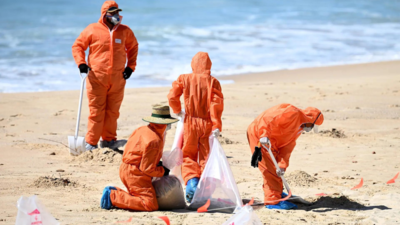
In October, a number of seashores in Sydney’s japanese suburbs have been closed after mysterious darkish spherical objects washed up on the shore, as extra of the balls continued to look, authorities took motion to shut a number of seashores for security.
Based on Randwick Council, the preliminary experiences had recommended that these balls have been Tar balls, a hydrocarbon-based pollutant. Louise Morris, oil and gasoline marketing campaign supervisor on the Australian Marine Conservation Society had defined that tar balls are blobs of petroleum which have travelled by means of the ocean, accumulating particles because of their sticky nature.
However the scientists on the College of New South Wales decided these objects have been ‘fatbergs‘, consisting of a nauseating combination of sewage, hair, cooking oils, chemical substances, fatty compounds, unlawful substances and different supplies.
Affiliate Professor John Beves described their odour to 9News as “completely disgusting”, noting it was worse than every other recognized odor. These ‘fatbergs’ usually develop in sewerage methods when non-dissolving supplies accumulate and bond collectively.
The incident led to the closure of eight Sydney seashores after these peculiar objects appeared. The Randwick Metropolis Council initially suspected them to be unrefined oil deposits, presumably from a spillage, as reported by 9News.
The analysis workforce famous that while every object had a strong exterior and softer inside, they diversified barely in composition.
“This was a big analytical problem, with extremely complicated mixtures containing tons of to hundreds of elements,” Analytical Chemist Professor William Alexander Donald informed 9News.
“We had loads of enjoyable analyzing these thriller blobs, utilizing deductive reasoning to hint the possible supply to human waste.”
Based on the NSW Environmental Safety Authority’s media assertion, the exact supply stays undetermined as a result of objects’ complicated composition and their extended publicity to seawater.
The EPA famous that Sydney Water confirmed no recognized points with the town’s waste administration methods. While the EPA continues its impartial evaluation of the objects’ composition, researchers recommend extra such waste matter might doubtlessly seem on Sydney’s seashores till the supply is recognized.



